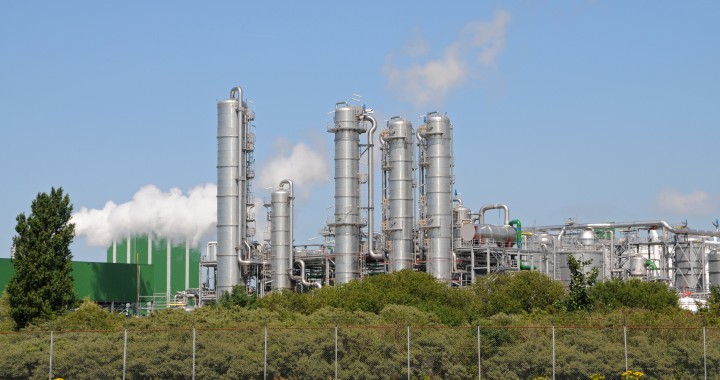March 28, 2013
11 Reasons Why You Should Invest in the Biodiesel Industry
GRAND FORKS, ND – (Mar. 28, 2013) – Below is breakdown of the latest, sourced information as to why investment in biodiesel is a sound decision written by Ron Kotrba, Editor of Biodiesel Magazine.
- Jump in on a growing market: The U.S. biodiesel industry is poised for its most profitable, successful year yet in 2013 with expected record-breaking production volumes thanks in part to the increased federal biomass-based diesel requirement of 1.28 billion gallons (28 percent higher than 2012), the $1 per gallon tax credit and rebounding D4 RIN prices. In addition, favorable blend economics indicate that obligated parties under the renewable fuel standard (RFS2) will find it economically advantageous* to blend U.S. biodiesel over Brazilian sugarcane ethanol to meet their advanced biofuel obligations (2.75 billion ethanol-equivalent gallons), over and above the biomass-based diesel volume requirements, suggesting the possibility of domestic biodiesel production significantly exceeding 1.28 billion gallons. *farmdoc daily
- Sustainable 10-year growth plan: IHS Global Insight conducted a modeling report for the National Biodiesel Board to help guide EPA with its yearly biodiesel RVO under RFS2 and, in the modeling report, the group determined that there will be enough feedstock available to reach 3.3 billion gallons of U.S. biodiesel production by 2022. Read article
- The National Biodiesel Board unveiled a new industry target in February 2013, named 10×22, an aggressive but achievable goal that calls for biodiesel to make up 10 percent of the U.S. diesel fuel supply by 2022. Read article
- Engine makers support biodiesel, why not you? All major OEMs producing diesel vehicles for the U.S. market support at least B5 and lower blends and 79 percent of U.S. manufacturers now support B20 or higher biodiesel blends in at least some of their equipment.
Source: NBB OEM support document, Sept. 2012 - No blend wall here: While the ethanol industry struggles with hitting its blend wall, biodiesel penetration in the 2012 U.S. diesel fuel supply was only 1.9 percent. Given that all major OEMs support B5, achieving a 5 percent biodiesel penetration rate would mean nearly 3 billion gallons of biodiesel production (almost three times greater than 2012 production volumes). Moreover, nearly all the biodiesel used in the U.S. today is consumed by heavy-duty applications, a growing number of which support B20. To reach 20 percent penetration, the U.S. would need to produce 11.5 billion gallons of biodiesel, 10 times more than produced last year. Read article
- Global ethanol and biodiesel consumption combined will reach 135 billion gallons by 2018.
Source: Global Industry Analysts Inc. - Biodiesel quality continues to improve: The latest NREL quality survey results announced February 2013 at the National Biodiesel Conference show a record 97 percent of the biodiesel on the market today is within ASTM D6751 specifications. Read article
- 68 percent of U.S. and Canadian biodiesel productive capacity is BQ-9000-certified, meaning strict quality controls are in place—of the approximately 3 billion gallons of productive capacity in the U.S. and Canada, 1.84 billion gallons is BQ-9000-certified versus 1.24 billion gallons that is not.
Source: 2013 Biodiesel Plant Map and the BQ-9000 site of certified producers. - Greenhouse gas emissions will continue to tighten globally, and EPA has determined that biodiesel from waste achieves more than 80 percent GHG reduction compared to the fossil diesel baseline, while biodiesel made from soybean oil achieves greater than 50 percent GHG reductions.
Source: EPA - Assurance in the market: Obligated parties, third-party quality assurance plan (QAP) providers, the biodiesel industry and government have worked together to restructure the RIN program to provide more security against potential fraud. A proposed QAP rule was issued in January and a final rule is expected midyear. The proposal offers obligated parties an affirmative defense against civil liabilities from buying, trading or retiring bad RINs, and includes one option that also relieves obligated parties from paying for the replacement of any invalid RINs.
Source: U.S. EPA - Supporting biodiesel supports economic growth: The biodiesel industry spent an estimated $4.3 billion to produce 1 billion gallons of biodiesel in 2012, without the $1 per gallon federal tax credit in place all year. The biodiesel industry supported approximately 64,000 jobs in 2012, once again without the $1 per gallon tax credit. With the credit, it would have supported another 19,200, totaling more than 83,000 jobs.
Source: NBB Fueling Action View document
About Biodiesel Magazine:
Biodiesel Magazine is a bi-monthly trade journal dedicated to objective, independent coverage of biodiesel news, events and information relevant to the global industry. With editorial focus on U.S. and international methyl ester manufacturing, trade, distribution and markets, Biodiesel Magazine also provides valuable insight into feedstock and market share competition from the non-ester renewable diesel sector. Biodiesel Magazine is owned by BBI International.
Contact Information
John Nelson
Email Contact
866-746-8385

